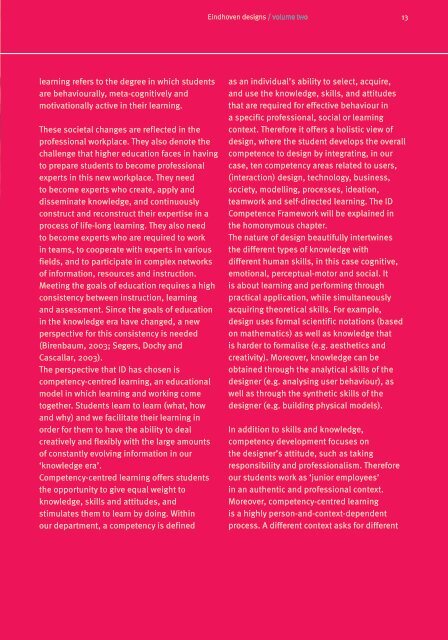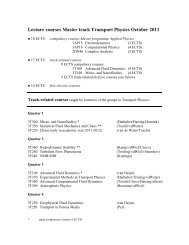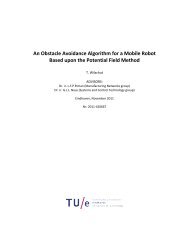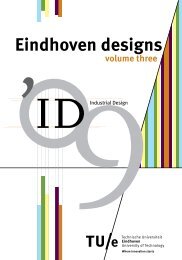Education guide 'Eindhoven designs' - Technische Universiteit ...
Education guide 'Eindhoven designs' - Technische Universiteit ...
Education guide 'Eindhoven designs' - Technische Universiteit ...
You also want an ePaper? Increase the reach of your titles
YUMPU automatically turns print PDFs into web optimized ePapers that Google loves.
Eindhoven designs / volume two<br />
13<br />
learning refers to the degree in which students<br />
are behaviourally, meta-cognitively and<br />
motivationally active in their learning.<br />
These societal changes are reflected in the<br />
professional workplace. They also denote the<br />
challenge that higher education faces in having<br />
to prepare students to become professional<br />
experts in this new workplace. They need<br />
to become experts who create, apply and<br />
disseminate knowledge, and continuously<br />
construct and reconstruct their expertise in a<br />
process of life-long learning. They also need<br />
to become experts who are required to work<br />
in teams, to cooperate with experts in various<br />
fields, and to participate in complex networks<br />
of information, resources and instruction.<br />
Meeting the goals of education requires a high<br />
consistency between instruction, learning<br />
and assessment. Since the goals of education<br />
in the knowledge era have changed, a new<br />
perspective for this consistency is needed<br />
(Birenbaum, 2003; Segers, Dochy and<br />
Cascallar, 2003).<br />
The perspective that ID has chosen is<br />
competency-centred learning, an educational<br />
model in which learning and working come<br />
together. Students learn to learn (what, how<br />
and why) and we facilitate their learning in<br />
order for them to have the ability to deal<br />
creatively and flexibly with the large amounts<br />
of constantly evolving information in our<br />
‘knowledge era’.<br />
Competency-centred learning offers students<br />
the opportunity to give equal weight to<br />
knowledge, skills and attitudes, and<br />
stimulates them to learn by doing. Within<br />
our department, a competency is defined<br />
as an individual’s ability to select, acquire,<br />
and use the knowledge, skills, and attitudes<br />
that are required for effective behaviour in<br />
a specific professional, social or learning<br />
context. Therefore it offers a holistic view of<br />
design, where the student develops the overall<br />
competence to design by integrating, in our<br />
case, ten competency areas related to users,<br />
(interaction) design, technology, business,<br />
society, modelling, processes, ideation,<br />
teamwork and self-directed learning. The ID<br />
Competence Framework will be explained in<br />
the homonymous chapter.<br />
The nature of design beautifully intertwines<br />
the different types of knowledge with<br />
different human skills, in this case cognitive,<br />
emotional, perceptual-motor and social. It<br />
is about learning and performing through<br />
practical application, while simultaneously<br />
acquiring theoretical skills. For example,<br />
design uses formal scientific notations (based<br />
on mathematics) as well as knowledge that<br />
is harder to formalise (e.g. aesthetics and<br />
creativity). Moreover, knowledge can be<br />
obtained through the analytical skills of the<br />
designer (e.g. analysing user behaviour), as<br />
well as through the synthetic skills of the<br />
designer (e.g. building physical models).<br />
In addition to skills and knowledge,<br />
competency development focuses on<br />
the designer’s attitude, such as taking<br />
responsibility and professionalism. Therefore<br />
our students work as ‘junior employees’<br />
in an authentic and professional context.<br />
Moreover, competency-centred learning<br />
is a highly person-and-context-dependent<br />
process. A different context asks for different

















